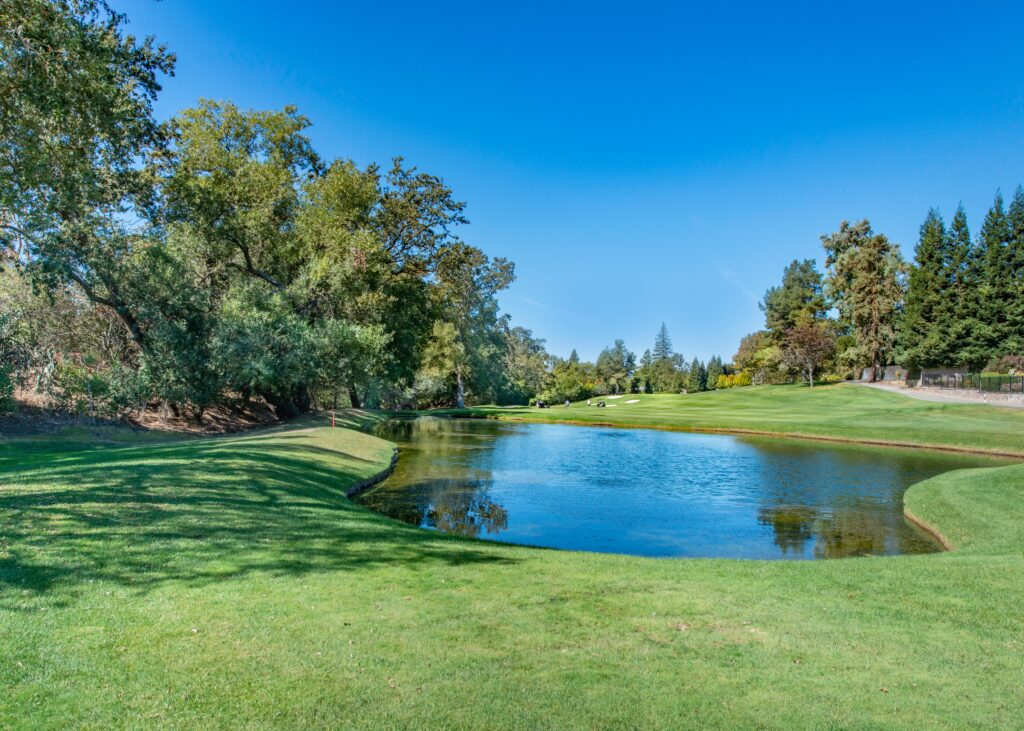Maintaining a healthy microbiome balance is critical in maintaining healthy ponds. Biofilm buildup in pond water circulation systems, such as those found on golf courses, can impact oxygenation and result in compounded issues such as foul odour, and algae blooms.
Healthy Ponds begin with a balanced microbiome and this is where H2O2 Water and Hydroxyl can offer help. NSF and EPA approved Hydroxyl is a fast acting, ecologically sustainable, stabilized peroxide product with a prolonged efficiency time. Biodegradable and non-toxic, Hydroxyl increases oxygenation levels, supports beneficial aerobic microbiomes, can control algae blooms, and targets harmful biofilm build up in pond water circulation systems. Hydroxyl decomposes into simple water and oxygen and leaves no lasting chemical footprint and no harmful byproducts or coproducts behind making it ideal for applications in environmentally sensitive ecosystems and/or where ethical environmental management are a concern.
Targets Biofilm Buildup – Hydroxyl is effective in eliminating the build up of algae and biofilms within water circulation systems. This prevents clogged nozzles and fountain heads and also keeps the pond water clearer.
Increases Aerobic Oxygenation – Hydroxyl raises the level of oxygen which in turn supports beneficial bacteria and algae. It can also contribute to improved aerobic degradation process within the pond supporting increased long term oxygenation.
Supports Balanced Pond Microbiome – Hydroxyl helps to maintain the balance between the algae and bacteria resources in the pond’s environment. Algae growth is controlled by breaking down its nutrient sources which in turn mitigates the risk of algal blooms and promotes a balanced ecosystem.
Reduces Odours – Hydroxyl is effective in neutralizing odour causing compounds, minimizing the impact to the surrounding environment.
Reduced maintenance and cost – A pond water circulation system treated with Hydroxyl has cleaner fountain heads and less build up in the pipes reducing the need for infrastructure maintenance and increasing the effectiveness of these systems.

At H2O2 Water, we understand that a balanced pond is a healthier pond. If you have any questions or want to learn more about our line of Hydroxyl products, our team is ready to help you.
Get in touch with us to learn more about how we can add value to your project.
1 519 465 4692
Cleaner water, clearer air, and enriched soil, one drop of Hydroxyl at a time.